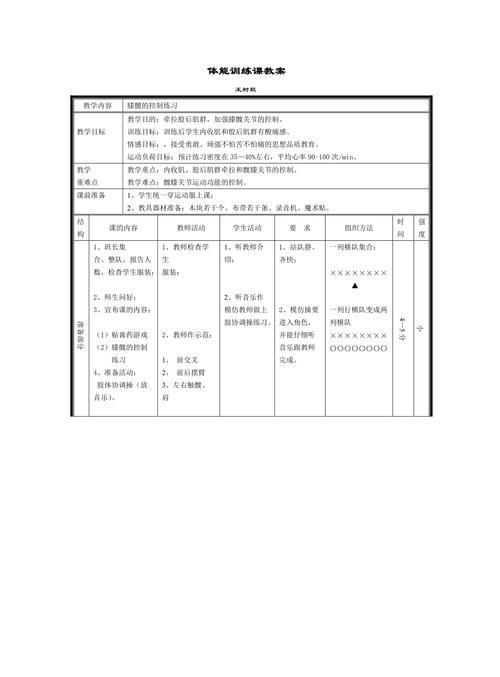身体健康体育技能
Developing Effective Health and Physical Education Lesson Plans
Creating comprehensive and engaging health and physical education lesson plans is crucial for promoting holistic wellbeing among students. A welldesigned curriculum not only fosters physical fitness but also instills lifelong healthy habits. Here's a guide to crafting effective health and physical education lesson plans:
Before crafting lesson plans, it's essential to understand the curriculum guidelines and objectives provided by educational authorities. Familiarize yourself with the learning outcomes and expectations for each grade level.
Define clear and measurable learning objectives for each lesson. These objectives should align with broader curriculum goals and focus on developing students' physical skills, knowledge of health concepts, and socialemotional wellbeing.
Include a variety of activities to cater to different learning styles and abilities. Incorporate aerobic exercises, strength training, flexibility routines, and skillbuilding drills. Additionally, integrate team sports, individual challenges, and cooperative games to promote teamwork and sportsmanship.
Integrate health education into physical activities to emphasize the importance of overall wellbeing. Topics may include nutrition, personal hygiene, mental health awareness, substance abuse prevention, and safety guidelines. Use interactive discussions, multimedia resources, and reallife scenarios to engage students.
Ensure that lesson plans are inclusive and accommodate students with diverse needs and abilities. Provide modifications and alternative exercises to support individuals with physical disabilities or medical conditions. Foster a supportive environment where all students feel valued and included.
Implement ongoing assessment strategies to monitor student progress and understanding. Use a combination of formative assessments, such as observation, peer evaluation, and selfassessment, along with summative assessments to measure learning outcomes. Provide constructive feedback to guide students' improvement.
Encourage students to apply learned skills and knowledge beyond the classroom setting. Emphasize the importance of regular physical activity and healthy lifestyle choices for maintaining overall wellness. Provide resources and recommendations for extracurricular sports activities, community fitness programs, and healthrelated workshops.

Collaborate with fellow educators, health professionals, and sports coaches to enhance the effectiveness of lesson plans. Share resources, exchange ideas, and seek feedback to continuously improve teaching practices. Stay informed about current trends and research in health and physical education.
Engage in ongoing professional development to refine teaching skills and stay updated on best practices. Attend workshops, conferences, and seminars related to health and physical education. Pursue further education or certifications to expand expertise in specialized areas, such as adaptive physical education or sports psychology.
Developing effective health and physical education lesson plans requires careful planning, creativity, and a commitment to student wellbeing. By prioritizing comprehensive curriculum design, inclusive teaching practices, and collaborative learning experiences, educators can empower students to lead healthy and active lifestyles.